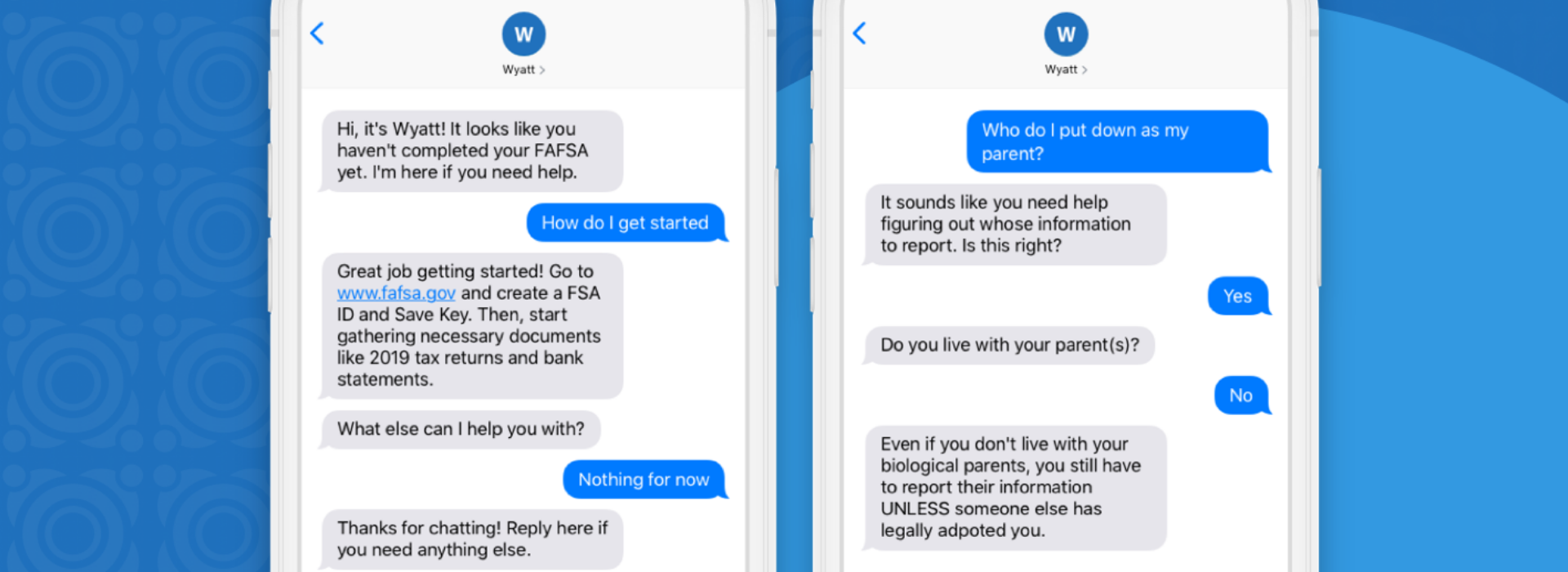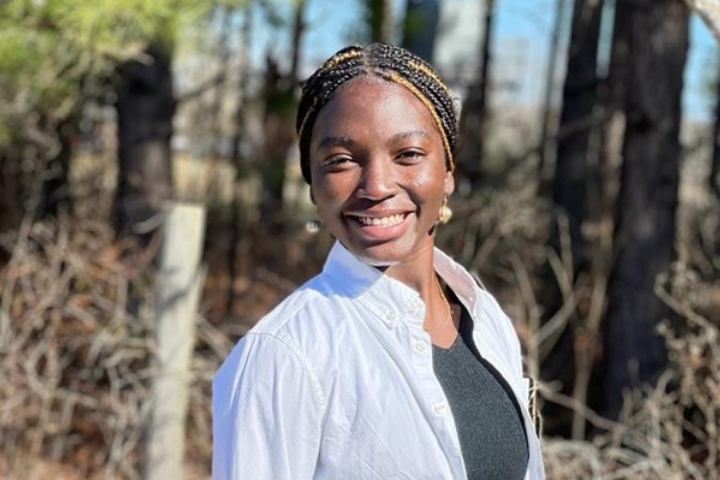FTW: This chatbot helps underserved students access aid for college
February 22, 2022 | By Sophie Hares
Ten years ago, Esther Egbe’s parents emigrated from Cameroon to Texas so their four children could receive college educations and build better lives. They opened an African food store in the small East Texas town of Palestine, and have been working around the clock to fulfill their dream ever since.
Now 17-year-old Egbe is poised to follow her older brother and sister to college, securing a place at the University of North Texas to turn her lifelong obsession with building into a civil engineering degree.
But earning admission to college was not the only hard part. Like millions of students across the country, Egbe needed to secure financial aid to meet the $27,000-a-year tuition and pay her living costs, and that means completing the Free Application for Federal Student Aid, a complicated form known as FAFSA. Confusion over financial aid eligibility, documentation and verification means that only 53% of high school seniors completed the application for the 2020-2021 academic year, according to an analysis by the National College Attainment Network in January.
That leaves thousands of dollars per student on the table — and could make the difference between choosing college or having to find a full-time job. Nine in 10 students who file the FAFSA enroll in college by November after graduating high school, according to one analysis, compared to 5 in 10 for those who do not.

Esther Egbe, above, is a high school senior from Texas who used a chatbot to help her complete the FAFSA, the key to accessing financial aid for college. (Photo courtesy Benefits Data Trust)
That’s why Benefits Data Trust, a national nonprofit that helps people in need tap into essential public benefits such as food assistance, saw an opportunity to connect with these underserved students. In 2020, in a partnership with the College Board, it launched a chatbot called Wyatt, which offers reminders and personalized advice to help guide students through the process.
More than 60% of Wyatt users are students of color, and more than half come from low-income families, so the chatbot is playing an important role in helping close the racial equity gap and boost economic mobility, says Trooper Sanders, BDT’s chief executive.
“Racial equity is a very complicated, challenging space,” he says. “If we don’t figure out how to break down the barriers for folks to get into school, not to mention how they can stay in school and have their basic needs met so they can focus, we’re never going to address some of these bigger challenges.”
Just as Egbe was getting overwhelmed by the complex process, she received a text from Wyatt. “I was falling behind on filling out the application,” she says. “It told me tips on how to check my student aid report to see if it has been verified.”
Sanders says texting was the obvious format to reach a generation of mobile-obsessed teens. The chatbot is available 24/7 and fields a range of questions, from how to access the application and which documents to use to how to report different types of income.
Those gentle nudges are starting to help. More than half the students who used Wyatt during the 2021-22 school year reported completing their FAFSA, says Neeta Sonalkar, BDT’s director of higher education innovation.
Wyatt is one of several efforts that BDT has expanded as part of a five-year initiative, supported by the Mastercard Center for Inclusive Growth, that uses data science to improve access to benefits and public programs for more than 5 million Americans by 2024.
As part of the initiative, BDT is building out its data architecture and exploring new ways to use machine learning to better help underserved communities reach services such as health care and financial aid.
BDT is even applying lessons gleaned from Wyatt’s late-night chat sessions with students to find more effective ways to communicate with other people it serves. All of which proves a point that teenagers have been arguing for a long time: Texting can be a highly productive use of time.